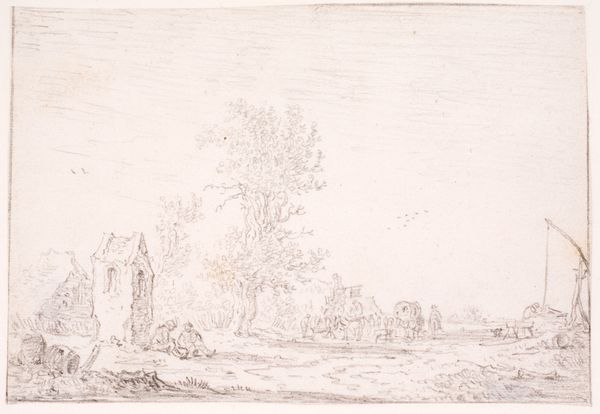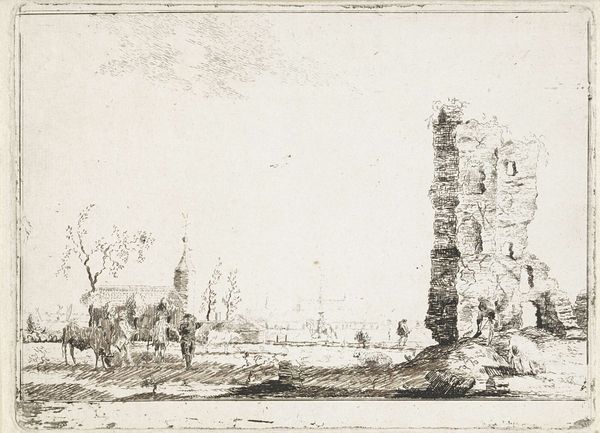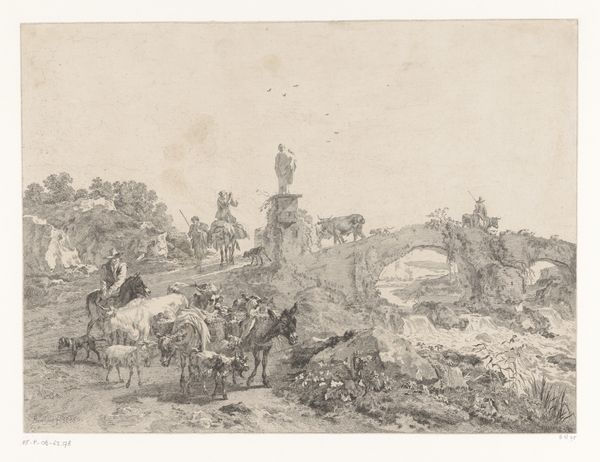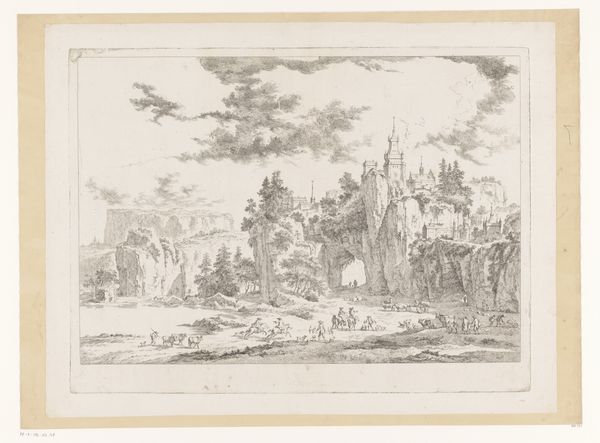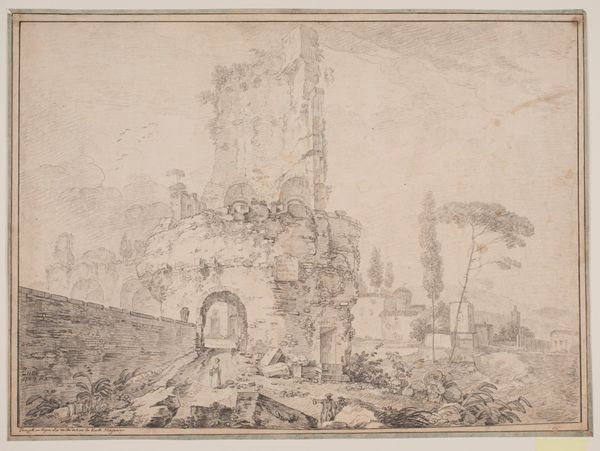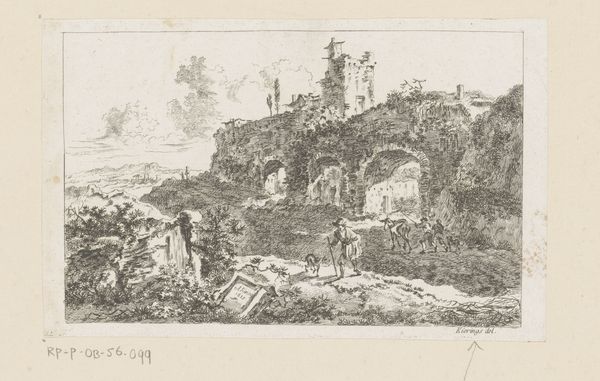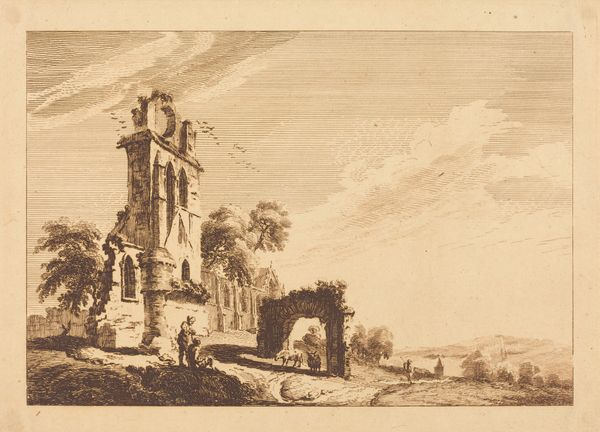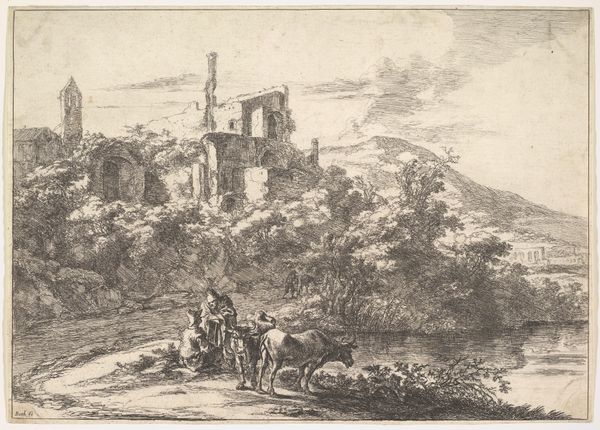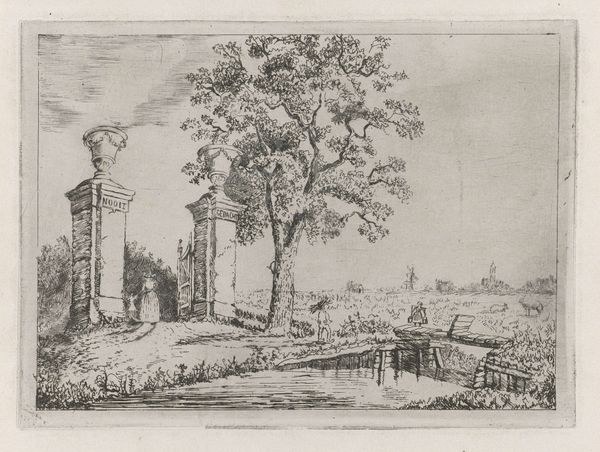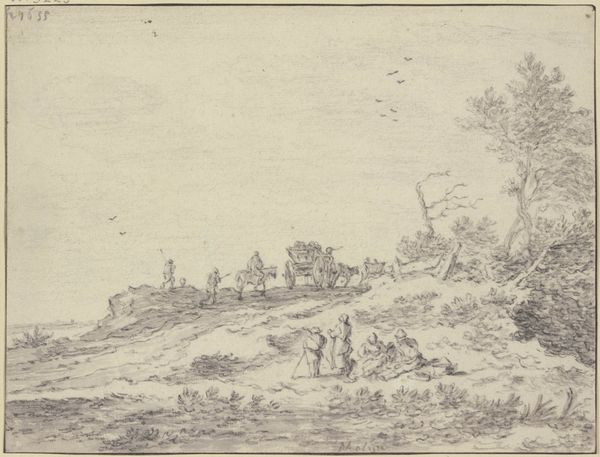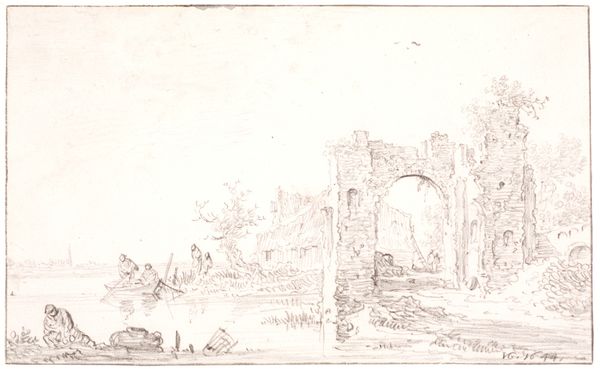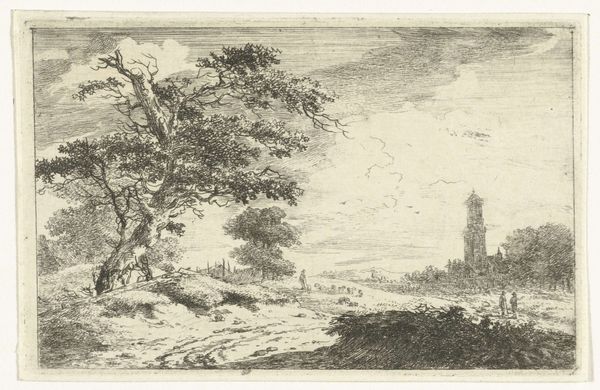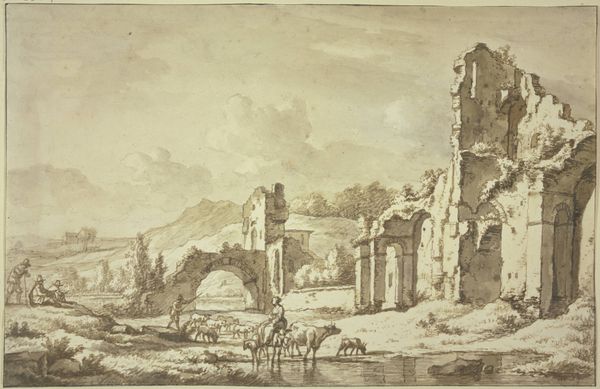
etching
#
dutch-golden-age
#
etching
#
landscape
#
etching
#
line
Dimensions: 87 mm (height) x 126 mm (width) (bladmaal)
Curator: Let’s take a moment to consider this delicate etching, "Ruins with a Tower on a Riverbank," created by Herman Saftleven around 1640. The work resides here with us at the SMK, the National Gallery of Denmark. Editor: My first thought is quiet solitude. The detail is astonishing, the thin lines of the etching are so fine it creates a miniature world steeped in introspection, like looking into memory itself. Curator: It’s intriguing that you mention introspection. Saftleven, and many Dutch Golden Age artists, often infused their landscapes with symbolism beyond the purely scenic. Ruins, for example, were popular symbols of the passage of time, of lost empires, of vanitas...the futility of worldly pursuits. Editor: Exactly. What I find captivating here is Saftleven’s handling of material reality. The physical process of etching—the tools he employed, the types of acids, the labor that’s implicit in producing each line and shadow. It's a meticulous dance between artist, copper, and mordant. It asks you to think about each step to achieve this effect. Curator: I agree, and this precise detail emphasizes the contrast between nature's endurance and human-made decay. The lone figure fishing draws me in; they are almost a meditative presence amid the ruins, a suggestion of continuing life among relics of the past. Does he fish for survival, I wonder, or to think alone? Editor: Consider also the commodification of this scene. Etchings, unlike paintings, were reproducible and portable. Think about the implications, they could circulate widely, feeding the Dutch middle class's desire for ownership and nostalgia. This wasn't just art; it was also a tangible commodity within the Dutch Golden Age economy. Curator: A point well-made. Seeing this work makes you imagine how many hands have carefully turned and viewed Saftleven’s plate, and each experience changes the art just a bit. Editor: Indeed, this beautiful, delicate work speaks volumes about past, place, economy and material practice.
Comments
No comments
Be the first to comment and join the conversation on the ultimate creative platform.
